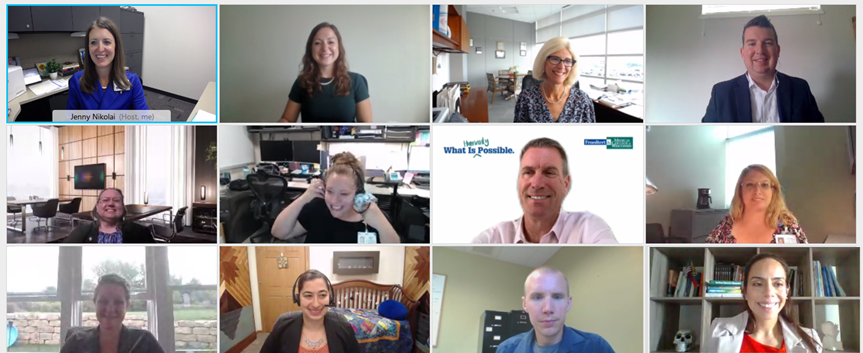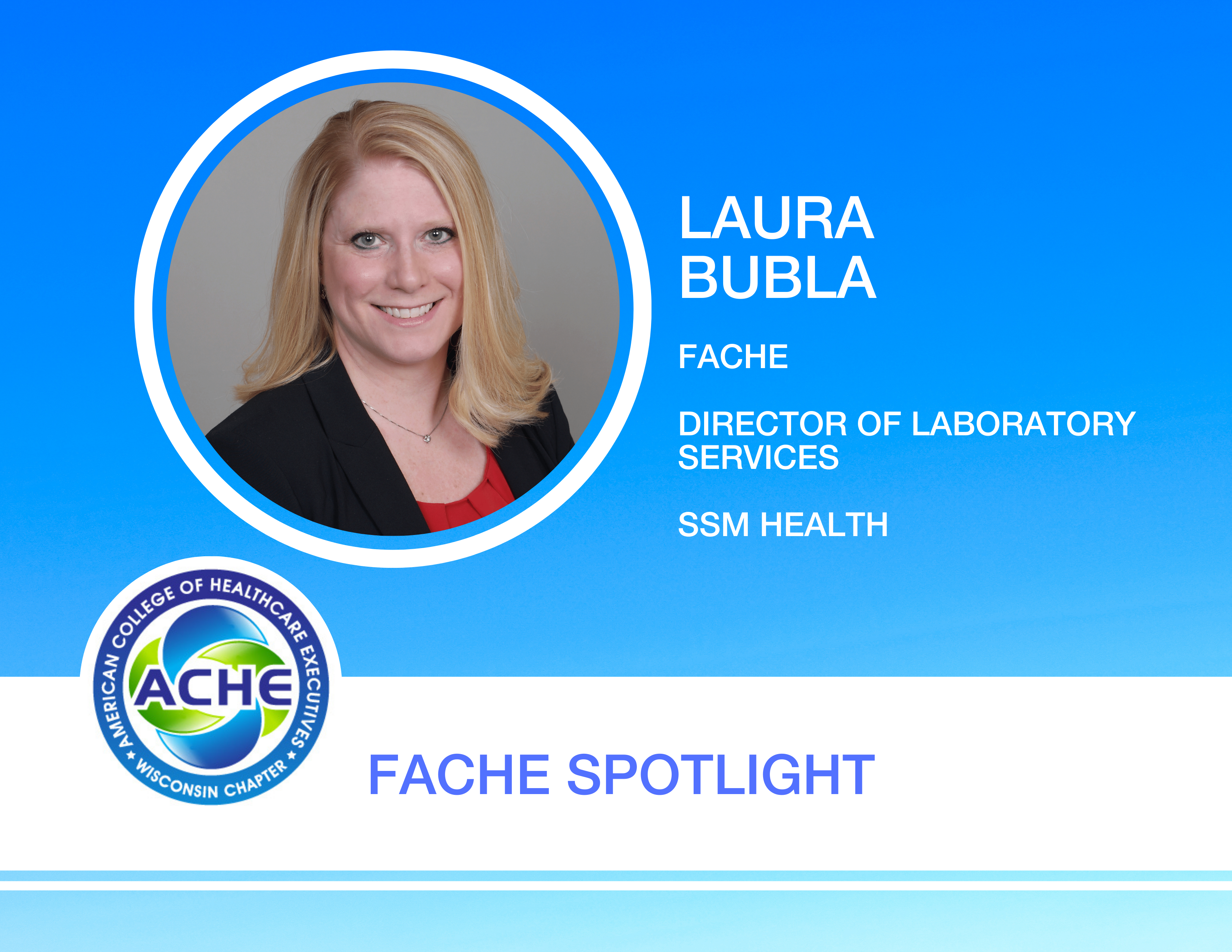In the Fall of 2018, one of my best friends proposed we embark on the ultimate weekend. One of his corporate partners invited him to a private event at Lambeau Field that included drinks, dinner and a tour with Packer Legend LeRoy Butler; following we made the roughly 70-mile trip to my family’s Northwoods cabin to fish before returning to Green Bay for the game on Sunday. The event at Lambeau was incredible, but it was the next morning that I remember the most. After breakfast, my friend calmly asked me where the nearest hospital was. He was experiencing chest pain and the closest hospital was nearly 45 minutes away. Knowing that calling an ambulance to our remote area would take considerable time, I chose to drive him to a rural hospital I knew was operated by a larger system with a renowned cardiology center. Thankfully, we arrived at the rural hospital and he began receiving treatment in time and transferred to the larger center to have a stent inserted into his 95% blocked artery. The following day, we watched the game from my living room instead of Lambeau Field.
I’ve had the privilege of delivering architecture and planning services to the Healthcare industry for the past 25 years in a variety of communities. In my personal life as well as my career, I have witnessed the impact different payment models can have on communities and developed a passion for understanding how the built environment can connect the delivery of care to diverse populations, while being financially sustainable, efficient and effective. Accessibility, adequacy and affordability of healthcare continue to be three primary concerns for Americans.[1] Having worked for facilities in rural and urban areas, I’ve noticed the disparity of the various payment models regulated by Health and Human Services (HHS) as well as the impact the Affordable Care Act has had on both demographics. Though the 2010 legislation has come with challenges for all healthcare providers, I’ve observed that rural communities have an even greater uphill battle that is often not considered. Factors such as longer travel distances, difficulties in attracting medical talent at all levels and various socio-economic realities present real barriers for rural health facilities to strike the balance between delivering appropriate services to their unique populations, while also being financially sustainable.

To meet the needs of this rural population, this provider is undergoing a phased approach of first
expanding a clinic with an ED, and then expanding to include inpatient to make a full-scale rural hospital.
An Alarming Trend in Rural Health
According to the National Health Council, rural areas cover over 90 percent of the nation’s land area but contain somewhere around 20% percent of the total population (about 60 million).[2] This underserved and remote population has gone unnoticed for far too long. The challenges for rural health have been pretty much the same for many years with realities like higher poverty rates, large numbers of uninsured people and older adults with chronic health problems, in addition to heightened exposure to environmental hazards. Despite enhanced payment models for some rural hospitals over the last 20 years, in a February 24, 2020 article [3] cited that 120 facilities have closed in the 10 years prior, accounting for 7% of the 1,844 rural hospitals at that time.[4] Forbes also claimed that 1 in 4 rural hospitals were at risk of closure—an especially shocking number considering this was prior to the pandemic. Fortunately, this alarming trend has started to drive increased attention from policy makers and advocates in recent years. The article also cited that 120 facilities have closed in the 10 years prior, accounting for 7% of the 1,844 rural hospitals at that time. Forbes claimed that 1 in 4 rural hospitals were at risk of closure—an especially shocking number considering this was prior to the pandemic. Fortunately, this alarming trend has started to drive increased attention from policy makers and advocates in recent years—but not enough yet.
To demonstrate the disparity in attention between communities, we can look to the COVID-19 pandemic as a recent example. Since the beginning of COVID, health reform conversations and data on the effects of this health emergency have been primary focused on urban areas. However, a recent study on rural health in the Western states confirms the importance of increased focus on rural healthcare facilities.[5] The research indicates that the effects of the COVID-19 pandemic on rural populations have been severe, with significant negative impacts on unemployment, overall life satisfaction, mental health, and economic outlook, and that rural recovery policies risk being informed by anecdotal or urban-centric information.
Legislative Measures for Rural Health
Although far from receiving the attention and resources needed, there has been some traction in congress for improving rural health. The Rural Emergency Acute Care Act (REACH) has been around in various forms since 2015 in an attempt to provide relief, but it did not address two important areas: reimbursement around telehealth and the promotion of partnerships between rural hospitals and their closest larger health systems. So, it ended up serving as more of a springboard than a solution.
On December 21, 2020, legislation on year-end COVID-19 relief [6] was approved by Congress, establishing Rural Emergency Hospitals (REHs) as a new Medicare provider type effective January 1, 2023. REHs—defined as providers that furnish certain outpatient hospital services in rural areas, including emergency department services—will be reimbursed at a rate 5% higher than the otherwise-applicable payment under the Medicare Outpatient Prospective Payment System (OPPS). This enhanced reimbursement will undoubtedly provide major financial relief for many struggling hospitals.
Facilities wanting to enroll as REHs will need to meet certain requirements and conditions placed by the Centers for Medicare & Medicaid Services (CMS). According to the act, REHs are required to:
- Not provide acute care inpatient services (beds);
- Not exceed an annual per patient length of stay of 24 hours;
- Have a transfer agreement in place with a Level I or II trauma center;
- Maintain a staffed emergency department, including staffing 24/7 by a physician, nurse practitioner, clinical nurse specialist or physician assistant;
- Meet CAH-equivalent Conditions of Participation (COPs) for emergency services;
- Meet applicable state licensing requirements.
At the time of this writing, the US Senate has just passed the American Rescue Plan [7]. The Senate version provides $8.5 billion for rural hospitals and facilities for healthcare-related expenses and lost revenues attributable to the COVID-19 pandemic. This is another positive sign the federal government is taking action to help our rural population and healthcare providers.

To minimize operating costs, this new construction rural hospital incorporated a geothermal system
to achieve payback in less than five years.
What Will the Future Hold for Rural Health
There are still a lot of open questions and the next two years will surely be filled with lively discussion and debate as CMS digs deeper into detailing future rulemaking and guidance while rural communities grapple with potential changes to their local healthcare system. Questions will be raised, such as: how will local jobs be affected? Will people adapt to only receiving primary and emergency care close to home with travel required for surgery and other complex procedures? With more flexible work models and the cost of living in urban areas rising, will younger populations move to rural areas post-pandemic, thereby increasing the need for resources? Will hospitals that recently closed be able to reopen as REHs? Rural communities and healthcare providers will need to have a broader dialog surrounding these issues soon.
The idea of bed-less hospitals may seem unconventional but has been around for years. One of my hospital clients in Maryland underwent a pilot program to relocate and convert an outdated hospital into a bed-less Freestanding Medical Facility (FMF), given its proximity to another licensed bed facility. There was considerable concern in the community that they were losing their hospital and access to comprehensive care, while absorbing the additional costs associated with an ambulance ride should they need to be transferred after stabilization. Some speculated that people might make the longer drive to a hospital with beds at the risk of not arriving in time to be kept alive. The facts in this case were just the opposite. The project data proved that residents would get better care and at a better price point than if they had kept their original facility—and that was without an enhanced reimbursement. Rural America is finally getting some of the financial relief and attention it has needed for so long, but it still has a long way to go. Rural Emergency Hospitals, like the one that saved my friend’s life, are a viable option for many communities. Hopefully after January 1, 2023, even more lives will be saved as more facilities are able to meet their populations’ healthcare needs and remain fiscally healthy themselves.
Originally Published in CREJ Health Care & Senior Housing Quarterly
Citations
[1] National Health Council, Accessibility, Adequacy & Affordability of Health Care for Patients During & After the COVID-19 Emergency. Nationalhealthcouncil.org, April 16, 2020. https://nationalhealthcouncil.org/accessibility-adequacy-affordability-of-health-care-for-patients-during-after-the-covid-19-emergency/
[2] National Health Council, Accessibility, Adequacy & Affordability of Health Care for Patients During & After the COVID-19 Emergency. Nationalhealthcouncil.org, April 16, 2020. https://nationalhealthcouncil.org/accessibility-adequacy-affordability-of-health-care-for-patients-during-after-the-covid-19-emergency/
[3] Clary Estes. “1 in 4 Rural Hospitals Are at Risk of Closure and the Problem Is Getting Worse.” Forbes. Forbes.com, February 4, 2020. https://www.forbes.com/sites/claryestes/2020/02/24/1-4-rural-hospitals-are-at-risk-of-closure-and-the-problem-is-getting-worse/?sh=74c6c5601bc0
[4] Clary Estes. “1 in 4 Rural Hospitals Are at Risk of Closure and the Problem Is Getting Worse.” Forbes. Forbes.com, February 4, 2020. https://www.forbes.com/sites/claryestes/2020/02/24/1-4-rural-hospitals-are-at-risk-of-closure-and-the-problem-is-getting-worse/?sh=74c6c5601bc0
[5] Proceedings of the National Academy of Sciences of the United States of America (PNAS). “Impacts of the COVID-19 on Rural America.” Edited by Douglas S. Massey, Princeton University, Princeton, NJ, and approved November 25, 2020. https://www.pnas.org/content/118/1/2019378118
[6] Emily J. Cook, Sandra M. DiVarco, Caroline Reigart. “Congress Establishes New Medicare Provider Category for Reimbursement for Rural Emergency Hospitals.” The National Law Review. March 22, 2021, Volume XI, Number 81. January 5, 2021. https://www.natlawreview.com/article/congress-establishes-new-medicare-provider-category-and-reimbursement-rural
[7] McGuireWoods, LLP. “U.S. Senate Passes American Rescue Plan – 10 Key Updates for Healthcare Providers.” March 9, 2021. https://www.jdsupra.com/legalnews/u-s-senate-passes-american-rescue-plan-4036718/
See full article…












